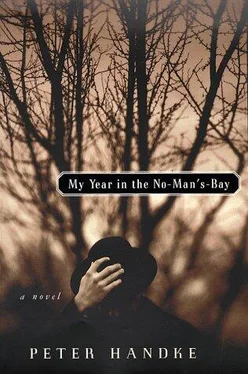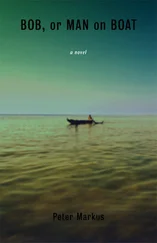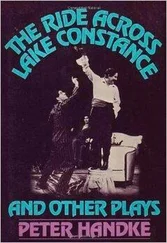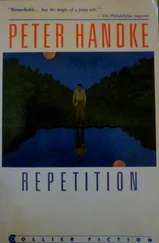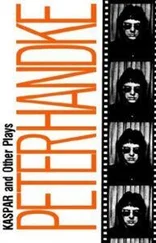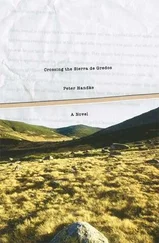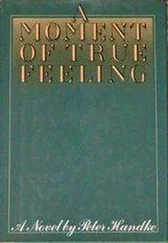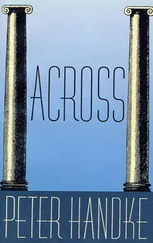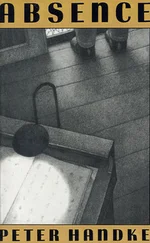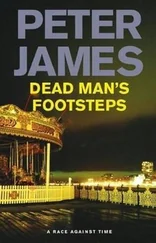Furthermore, the filmmaker did not recognize until the test shoot in the Castilian highlands that the light there differed in some decisive way from that in his dream. To be consistent with that dream, an entirely different light had to prevail in the next sequence, after the family set out with the corpse of the mother — which, like the living, joined in narrating one phase or another of the journey, from the coffin; the light was to be that of the “Land Behind the Mirror” (the film’s title).
It had to do purely with sense impressions that were missing from the Iberian interior with its lack of water and its almost nonexistent cliffs (those that did exist were dull yellow and hardly reflected anything), but not from the sparkling granite areas along the coast, where in the heart of Galicia even seemingly dry brook beds and mere mud puddles that looked like cattle watering places would swell up in the flooding and spread out to the width of the rivers or lakes they really were: not small meadow brooks, not merely damp, naked earth between two fields, but arms of the sea with salt water.
And there was another reason for him to have his film take place in that light, besides the most obvious one. When he, already no longer young, had first found himself in Vigo, Pontevedra, and La Coruña, he had moved through the area from beginning to end with the sensation of cities behind a mirror. He had certainly known their names all his life, but not been able to imagine an existence to go with them. For him Spain ended long before that, with the Sierra Cantabrica or at most with Santiago de Compostela. (Similarly, in his childhood, in his own house, there had been forgotten corners, which, when one entered them unexpectedly, appeared brighter than the rest, with everything highlighted and graphic.)
Something was behind the mirror, it was said, had been there all the time, and very close by, too. And nevertheless one first had to get through to it, who knew how? at the suitable moment, when was that? But then there were revealed, and as a rule precisely in one’s own country, on one’s own continent, as if independent of it and self-sufficient, as if completely on their own and also quite healthy and sturdy, existing settlements, entire cities or city-states, in whose polished mirror surface a new world could be deciphered. At least that was how it had seemed to him that time in La Coruña, and even more in the larger town of Vigo. And all this was perfectly natural.
So for the film it was merely necessary to soften here and there the gleam in the foreground and add a glow in the background. The technical crew, uncertain at first because he, allegedly a painter, did not lay out for them a single camera angle or light setting, soon got used to being, like him, only somewhat prepared instead of completely. It even electrified them when he came up with a surprise at the last minute. And with the passage of time they, too, seemed happy that he was not narrating his story as they were perhaps accustomed to; he allowed the images to follow each other in such a way that it looked more like a frieze than an ordinary film, and background noise, of planes, of trains, was as welcome to him as the sudden shadow of a cloud on the face of the actor who happened to be speaking. Finally a sound engineer took it upon himself, after the end of the workday, to go, in pitch-black night and heavy rain, out to the lighthouse of La Coruña because he was not satisfied with that day’s recording of raindrops falling on an empty soda can out there among the cliffs; he wanted to catch the sound between the drops that fell into the can through the drinking hole.
And the actors, a family of Castilian villagers, to whom the coastal region was also new, recited their story, or watched and listened to it with a complete, almost imploring solemnity, which came perhaps from the fact that the moment of shooting was the first time all of them were speaking their monologues — the script had nothing else — learned in isolation, each of them alone.
Things changed when the film was finished. Even before that there had been hardly anyone who seemed to be really looking forward to the film, and those who said they were curious did so in a tone that made it sound like a threat.
At a first screening for his acquaintances in the interior, they avoided his eyes when it was over, and those who opened their mouths spoke of something else entirely, or praised the shot “where the fish leaps over the coffin.” A few complete strangers had wandered in off the street, one of whom began to clap at the end but stopped at once in the general silence.
Of a second screening, for a couple of potential distributors, at which the painter was not present, he heard only that one of them had had tears in his eyes, and had at the same time given the thumbs-down sign. Then some viewers had their praise conveyed to him, and a short while later expressed to him their disappointment at his failure to respond.
Having believed that his film was for the whole world, my friend felt mute anguish at his lack of success, anguish that stemmed from the thought of having done something that hardly anyone needed to do anymore; the times — or who or what? — needed stories other than those in As I Lay Dying .
His loss of distance had a different origin, however. The origin lay within him. It seemed to him as though with this film, for which he had seen himself as responsible, he had lost his unity with himself, his identity; only when it was no longer present had it been transformed from a word into a thing.
That he had made a fool of himself was something he welcomed; from the beginning that had been characteristic of him, had meanwhile become, to an extent, a sort of duty, which enabled him to carry on. The waste of money was a matter of indifference to him. And if the notion of defeat came to him, he thought, “What defeat?”
Yet no such redeeming contradiction presented itself in response to the thought: “Distance and I are no longer one, I am not a painter anymore.” The question “Who am I?” had ceased to be rhetorical for him. It was he who had driven himself from his special place, to which he had laid claim from very early on and had occupied with an assertiveness unlike that of any of the painters around him. It had been said of his paintings that in them, specifically with the many variations on black, perhaps for the last time in history the coasts of the Mediterranean had been brought to life, from Gibraltar by way of Sicily and the Peloponnesus to Crete and Phoenicia, as only once before, and then by all the peoples together, in classical antiquity.
No longer to know who one was also implied culpability, incurred anew with every step. Since his transgression he was an outlaw, not vis-à-vis the world around him but vis-à-vis himself. To be without identity was not something he experienced as blissful extinction. It was a stigma he could not hide, for it was visible only to himself.
The loss of distance meant at the same time a loss of images, in the sense that without that feeling for distance he could no longer paint — could not send his color off in any direction. Whenever he looked around for his material, as now on the Duero, light did radiate from the spot, to be sure, but it was whirling and frightening as, in his childhood, the snakes on the Medusa’s head in the Roman museum in his native Tarragona had been. Hadn’t the gaze that allegedly turned people to stone looked to him more like one that summoned people to reflect? Thus in his months of confusion he thought one time: “It may be that I have blocked my way back home.” And then another time: “That’s fine. What an adventure. Finally out in the wild world.”
Medusa was a beautiful, solemn young woman whose head was later cut off, and from this sprang, instead of snakes, the horse with wings, Pegasus by name.
Читать дальше
